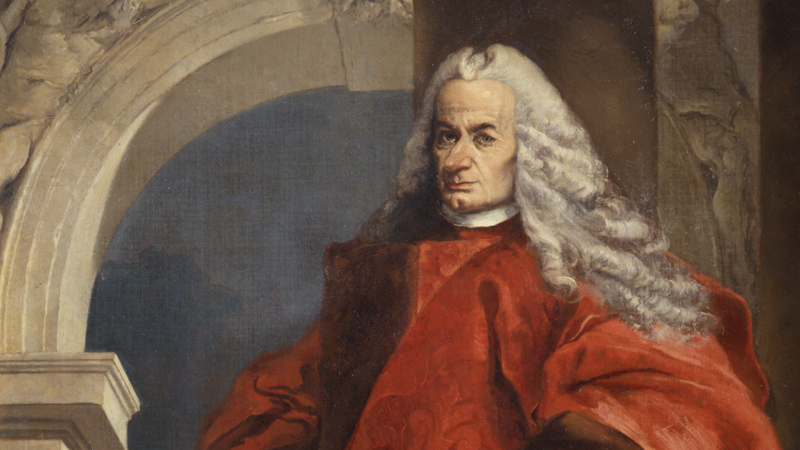GUEST WORK
GIAMBATTISTA TIEPOLO
Portrait of Daniele IV Dolfin
Fondazione Querini Stampalia, Venice
Giambattista Tiepolo (1696-1770) was the most active painter in Venice during the first half of the eighteenth century. It was not long before Tiepolo gained the favours of the local aristocracy, who saw in him an artist who could conceive and paint large compositions on historical themes, with an allegorical and triumphal purpose and framed by illusionist classical architecture. Tiepolo had a marked preference for using a palette of bright and vibrant colours, in paintings filled with light that demonstrated his ability to create scenes which, although they displayed little archaeological rigour, nonetheless had an undeniable dramatic impact. His pictures also revealed the use of a most expressive brushwork, already showing signs of the romanticism to come and attracting attention to his work far beyond the Veneto region. He painted with the same energy in Lombardy and Germany as he did for the Swedish Crown and the Russian Czars, before making his way to Madrid – where he was to die in 1770 – having been commissioned by King Carlos III to decorate the Royal Palace.
GIAMBATTISTA TIEPOLO
Portrait of Daniele IV Dolfin
Fondazione Querini Stampalia, Venice
Giambattista Tiepolo (1696-1770) was the most active painter in Venice during the first half of the eighteenth century. It was not long before Tiepolo gained the favours of the local aristocracy, who saw in him an artist who could conceive and paint large compositions on historical themes, with an allegorical and triumphal purpose and framed by illusionist classical architecture. Tiepolo had a marked preference for using a palette of bright and vibrant colours, in paintings filled with light that demonstrated his ability to create scenes which, although they displayed little archaeological rigour, nonetheless had an undeniable dramatic impact. His pictures also revealed the use of a most expressive brushwork, already showing signs of the romanticism to come and attracting attention to his work far beyond the Veneto region. He painted with the same energy in Lombardy and Germany as he did for the Swedish Crown and the Russian Czars, before making his way to Madrid – where he was to die in 1770 – having been commissioned by King Carlos III to decorate the Royal Palace.
Daniele IV Dolfin (1656-1729), who is portrayed here posthumously by Tiepolo, belonged to a most prestigious patrician family, one of the twenty-four that, according to tradition, had contributed to the foundation of the Venetian State. He distinguished himself as a military commander in the lengthy armed conflict with the Turkish Empire in the Peloponnese, between 1684 and 1699, which ended with the temporary blockade against the Ottoman expansion in the Aegean Sea.
Exhibition booklet

Exhibition booklet

